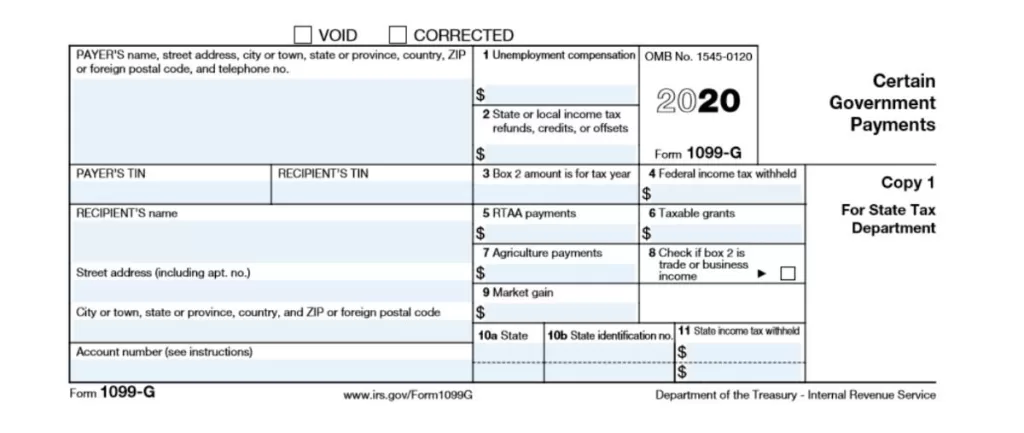
Unemployment benefits during 2021 were still at a historical high, and your employee may fall victim to fraudulent unemployment claims. If an employee reaches out to your payroll or HR department, here are a few things to look for:
- Did you notify your employees that you received a request for information about an unemployment claim in their name while your business still employed then?
- A government agency mailed them a notice about an unemployment insurance claim or payment they didn’t submit or receive.
- They received a Form 1099-G reporting in Box 1 unemployment insurance benefits they never received. It may also contain an amount greater than what they actually received during the year.
If you suspect they were a victim of unemployment fraud, they can refer to the IRS site for information. It’s important that they take immediate steps to report unemployment identity theft to the state where it occurred and correct any tax forms (1099G) they may have received due to a fraudulent claim. The US Department of Labor has a website for victims of unemployment fraud that provides key steps to help victims of unemployment fraud.
Once they have confirmed they are a victim of unemployment fraud:
- The IRS encourages taxpayers to submit an accurate tax return, reporting only their income, even if they have not yet received a corrected 1099-G from the state.
- They should then contact the state issuing agency of the Form 1099-G immediately and request a revised Form 1099-G showing they did not receive these benefits and make sure they don’t report them on your tax return.
What Is Form 1099-G?
Government agencies use the 1099-G to report payments made to businesses or individuals to the Internal Revenue Service (IRS). This does not include wages. The most common use is to report unemployment compensation or tax refunds.
Who Receives Form 1099-G?
The recipients of unemployment compensation, state or local income tax refunds, credits, or offsets, or one of the other listed government payments will be sent a copy of Form 1099-G by Jan. 31 by the filing agency. Additionally, unemployment compensation copies may be available online at the state’s unemployment benefits website.
Federal, state, or local governments would file this form if they made payments of:
- Unemployment compensation.
- State or local income tax refunds, credits, or offsets.
- Reemployment trade adjustment assistance (RTAA) payments.
- Taxable grants.
- Agricultural payments.
They also file this form if they receive payments on a Commodity Credit Corporation (CCC) loan.
You should consult your tax professional to understand any tax implications when receiving a Form 1099 G.
What Is Contained On The Form 1099-G

The 1099 G form identifies the agency that made the payment(s) and the nature of those payments.
- Box 1: Unemployment compensation. Box 1 shows the total unemployment compensation (including Railroad Retirement Board payments).
- Box 2: State or local income tax refunds, credits, or offsets. Box 2 shows refunds, credits, or offsets of state or local income tax you received.
- Box 3: Box 2 amount is for the tax year. Box 3 shows the tax year for which the refunds, credits, or offsets in Box 2 were made. The box may be left blank if the refund, credit, or offset is for the current tax year.
- Box 4: Federal income tax withheld. Box 4 shows backup withholding or withholding requested on unemployment compensation, Commodity Credit Corporation (CCC) loans, or certain crop disaster payments.
- Box 5: RTAA payments. Box 5 shows reemployment trade adjustment assistance (RTAA) payments received.
- Box 6: Taxable grants. Box 6 shows taxable grants received from government agencies.
- Box 7: Agriculture payments. Box 7 shows taxable payments received from the US Department of Agriculture (USDA).
- Box 8: Check if box 2 is trade or business income. Box 8 shows if the amount in Box 2 is related to an income tax that applies exclusively to income from a trade or business.
- Box 9:Market gain. Box 9 shows any market gain associated with the repayment of a Commodity Credit Corporation (CCC) loan (available only to farmers).
- Box 10a: State. Box 10a shows the abbreviated name of the state.
- Box 10b: State identification no. Box 10b shows the state’s identification number.
- Box 11: State income tax withheld. Box 11 shows the amount of state income tax withheld.
The 1099 G form is available at the IRS site here.
